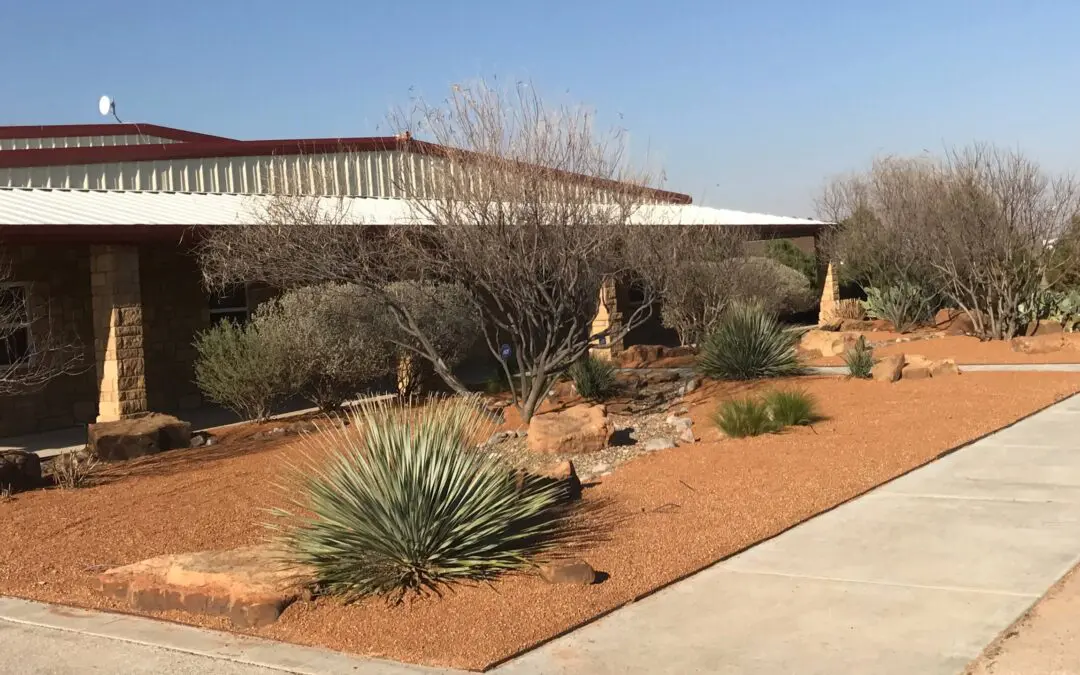In the arid landscapes of West Texas, traditional landscaping often faces challenges due to water scarcity and extreme weather conditions. Thankfully, there’s a fantastic solution that not only thrives in this environment but also offers numerous benefits: xeriscaping! At Eternal Tree & Landscape in Midland, TX, we’re excited to share how xeriscaping can transform your outdoor space while conserving precious water resources.
What is Xeriscape?
A Philosophy of Water Efficiency
Xeriscaping isn’t just a landscaping method; it’s a whole philosophy centered on minimizing water usage while creating beautiful, resilient outdoor spaces. The term “xeriscape” comes from the Greek word “xeros,” meaning dry. This approach focuses on strategic design and plant selection to create landscapes that are both visually appealing and water-efficient.
Why Choose Xeriscaping in West Texas?
Water Conservation
Water is a precious resource in our region, and xeriscaping can help you significantly reduce outdoor water usage compared to traditional landscaping. By using drought-tolerant plants and efficient irrigation systems, your xeriscaped garden can thrive with minimal supplemental watering, even during long dry spells.
Low Maintenance
One of the best perks of xeriscaping is that it typically requires less maintenance than traditional landscaping. This makes it a perfect choice for busy homeowners and businesses. With smart planning and the right plant selection, your xeriscaped garden can flourish without constant mowing, fertilizing, or intensive upkeep—saving you time and effort.
Environmental Sustainability
Xeriscaping promotes a sustainable approach to gardening. By conserving water and using fewer fertilizers and pesticides, you’re helping protect local ecosystems and support biodiversity. This eco-friendly method creates healthier landscapes for future generations to enjoy.
Climate Resilience
West Texas is known for its hot summers, unpredictable rainfall, and occasional droughts. Xeriscaping is well-suited for these climate challenges. Drought-tolerant plants like succulents, cacti, and native grasses thrive in these conditions, while efficient irrigation techniques, such as drip irrigation and mulching, help retain moisture and minimize water loss.
Tips for Successful Xeriscaping
Choose Native and Adapted Plants
Opt for drought-tolerant plants that thrive in our local climate. Native species and adapted varieties typically require less water and maintenance, and they provide habitats for local wildlife.
Optimize Your Irrigation
Install efficient irrigation systems like drip irrigation or soaker hoses to deliver water directly to the roots of your plants. Consider using timers and moisture sensors to ensure precise watering and avoid overwatering.
Use Mulch and Soil Amendments
Applying mulch around your plants helps retain soil moisture, suppress weeds, and regulate soil temperature. Amending your soil with organic matter can improve water retention and drainage, creating a healthy environment for your plants to thrive.
Embrace Hardscaping
Add hardscape elements like gravel pathways, rock gardens, and retaining walls to bring structure and visual interest to your landscape. These features require minimal water and maintenance, perfectly complementing the overall xeriscape design.
Practice Smart Maintenance
Keep your xeriscaped landscape healthy with sustainable gardening practices. Regularly monitor your irrigation systems, control weeds, and manage soil health to ensure long-term success.
Conclusion
Xeriscaping is a sustainable and practical solution for creating beautiful, resilient landscapes in the water-challenged environment of West Texas. By embracing xeriscaping principles, you can conserve water, reduce maintenance, and promote environmental resilience—all while enjoying lush, inviting outdoor spaces. With careful planning, plant selection, and maintenance, your xeriscaped garden can thrive year-round, providing inspiration and pride for generations to come.
Let’s make your landscape not just beautiful but also water-wise! Reach out to us at Eternal Tree & Landscape to get started on your xeriscaping journey today!


Recent Comments